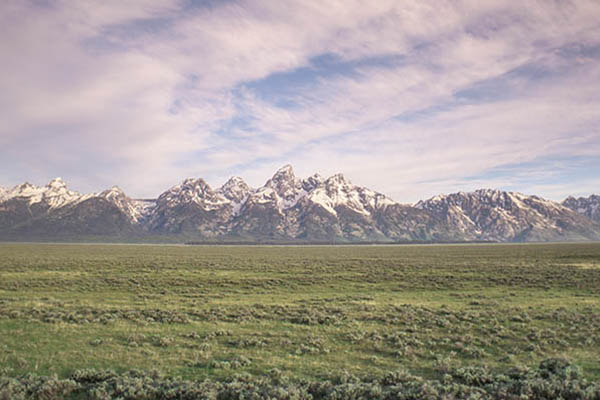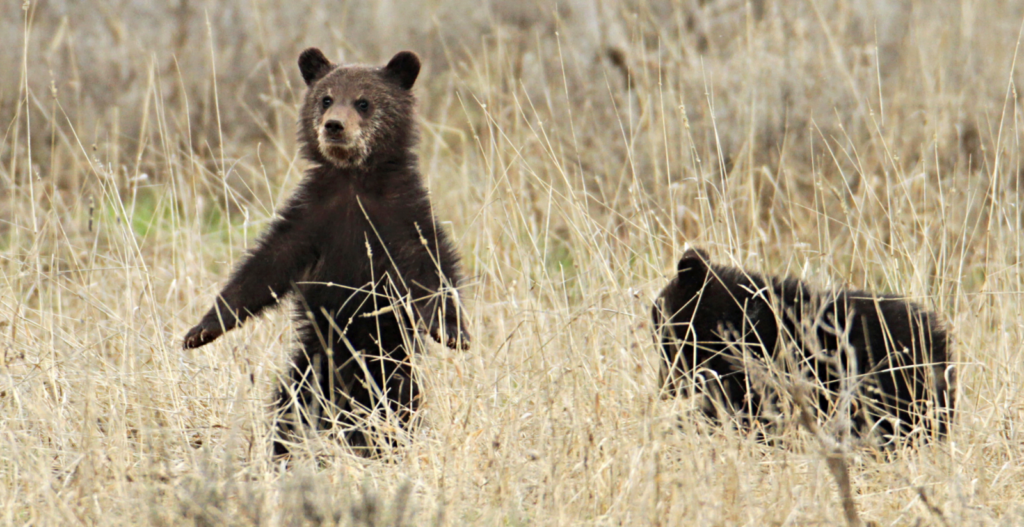
The arrival of summer in Grand Teton National Park is marked by long days and warmer temperatures. As the daily high temperatures increase, mid-day animal activity will significantly reduce. Your best chances of seeing the park's incredible wildlife are during early mornings or late afternoons.
- June weather in the park has provided great variability mirroring extreme highs and lows but staying within the historical ranges.
- Peak flow on the Snake River varies from year to year. It was June 10th this year, compared to May 25th last year. This year’s peak stream flows are starting to decline; however, recently flooded areas and standing water provide seasonal mosquito breeding opportunities. Mosquitoes vary in abundance across the landscape, providing food to birds, bats, fish, and other species.
- Grizzly bear 1063 emerged from her den with three cubs of the year, her first known offspring. At seven years of age, she is slightly older than the area's average age for producing a first litter. Bear biologists believe this might be part of the natural response of grizzlies to the increased density of bears in the Greater Yellowstone Ecosystem. She and other grizzly bears are commonly observed from roadsides, so please drive slowly and be vigilant for wildlife, especially at dawn/dusk and after dark.
- Trumpeter swan eggs are hatching. Young swans, or cygnets, are typically light gray and can swim within twenty-four hours of hatching. They will be roughly three and a half to four months old before they take their first flight.
- The spring birth pulse for Jackson Hole ungulates (mammals with hooves) is winding down. Most ungulate babies are on their feet and able to move the day they are born. Some, like bison, use the follower strategy, where the new calves stay with their mothers at all times. Others, like deer, elk, and pronghorn, use the hider strategy, where mothers often hide their newborn fawns or calves and return to them periodically to nurse.
- Moose are VERY protective of their young. Please be cautious and give them a wide berth. Small ponds provide favored moose food and habitat. At a popular pond last week, a mother and her calf used the area one day, followed by three bull moose in velvet the next. One of the bulls spent his time "snorkeling" for submerged vegetation—only a tuft of wet shoulder fur visible above the surface surrounded in bubbles while he sought out tender shoots in deep water. The other bulls participated in the more common practice of chest-deep wading combined with head dunking to reach their food.
- Yellow-bellied marmots, large members of the ground squirrel family, are feeding primarily in the morning and evening and resting during the heat of the day. As their name suggests, they often have yellowish fur on their bellies and darker brown or gray on their backs. Some marmots that reside in Grand Teton are primarily black.
- Neotropical birds, such as ruby-crowned kinglets, western tanagers, and hummingbirds, have returned and are busy breeding and raising young.
- Wolf, coyote, and fox pups from successfully reproducing packs or pairs have now emerged from their dens. They do not stray far from their dens, rendezvous sites, or the watchful eye of adults. They are out and about, learning about the new world around them while playing and rapidly growing.











